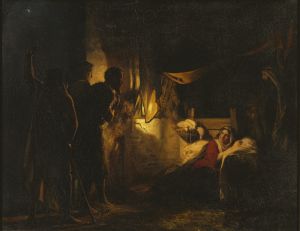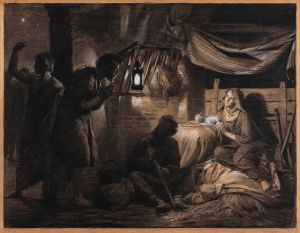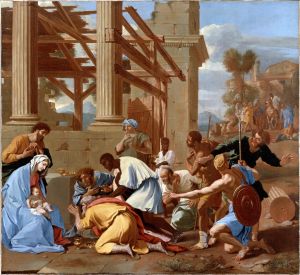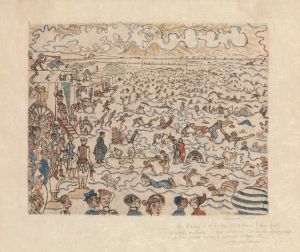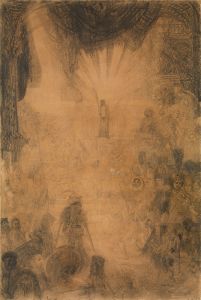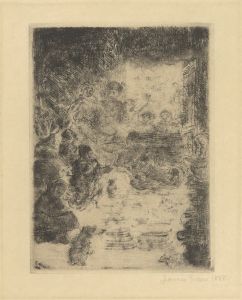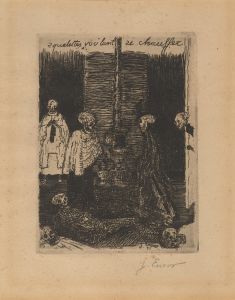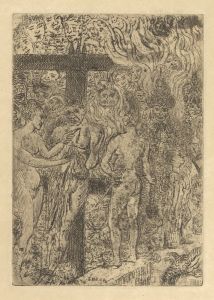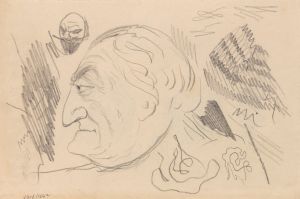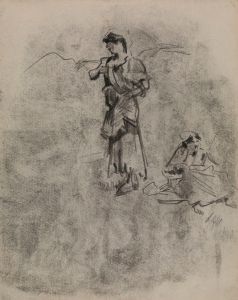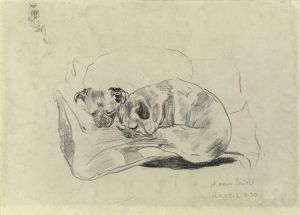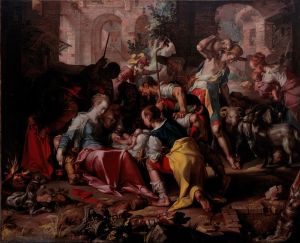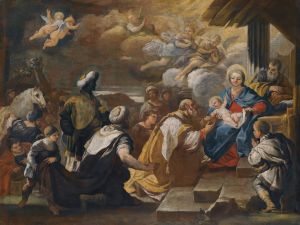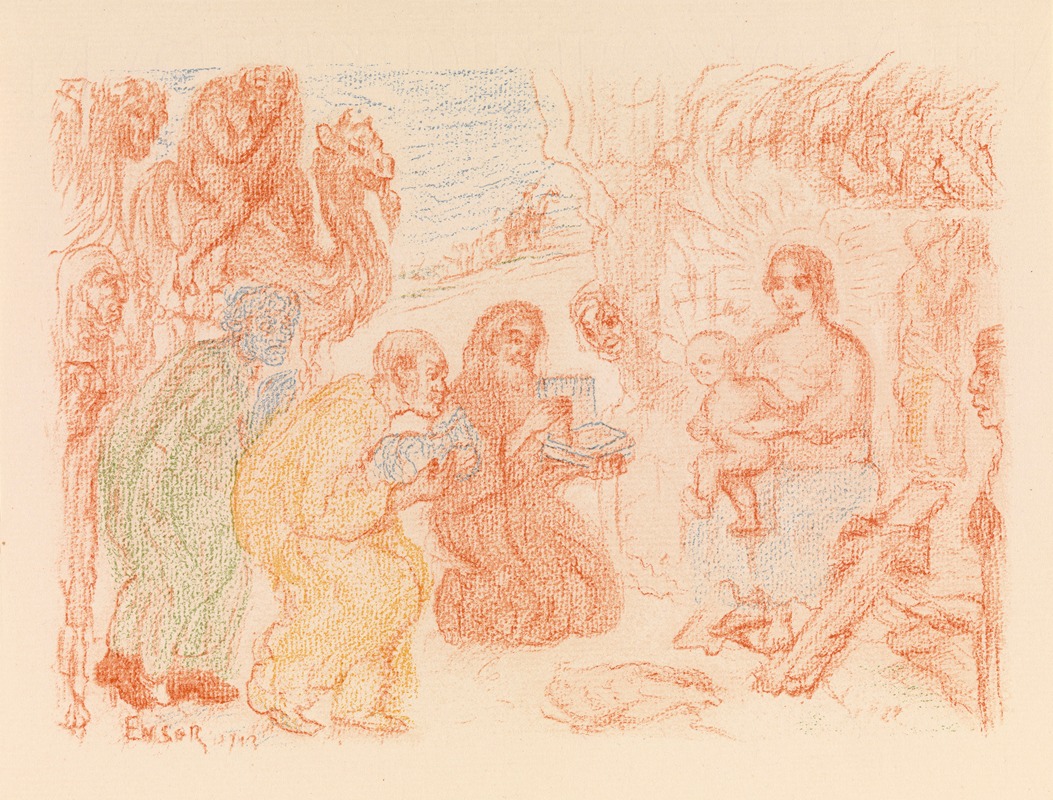
The Adoration of the Magi
A hand-painted replica of James Ensor’s masterpiece The Adoration of the Magi, meticulously crafted by professional artists to capture the true essence of the original. Each piece is created with museum-quality canvas and rare mineral pigments, carefully painted by experienced artists with delicate brushstrokes and rich, layered colors to perfectly recreate the texture of the original artwork. Unlike machine-printed reproductions, this hand-painted version brings the painting to life, infused with the artist’s emotions and skill in every stroke. Whether for personal collection or home decoration, it instantly elevates the artistic atmosphere of any space.
James Ensor's "The Adoration of the Magi" is a notable work by the Belgian artist, who is renowned for his unique style that blends elements of Impressionism, Symbolism, and Expressionism. Ensor, born in 1860 in Ostend, Belgium, was a pivotal figure in the development of modern art in Europe. His work often features fantastical imagery, vibrant colors, and a distinctive use of light and shadow, which are evident in this particular painting.
"The Adoration of the Magi" depicts the biblical scene of the Three Wise Men visiting the newborn Jesus, a subject that has been a popular theme in Christian art for centuries. Ensor's interpretation of this scene is characteristically unconventional, reflecting his penchant for blending traditional religious themes with his own imaginative and often satirical vision.
In Ensor's version of the Adoration, the composition is filled with a multitude of figures, creating a sense of chaos and movement. This bustling scene is typical of Ensor's crowded compositions, where he often includes a variety of characters, some of whom appear to be wearing masks or costumes. This use of masks is a recurring motif in Ensor's work, symbolizing the hidden aspects of human nature and the façades people present to the world.
The painting is notable for its vibrant color palette, with bold reds, blues, and yellows dominating the canvas. Ensor's use of color is expressive and emotive, contributing to the overall dynamic and lively atmosphere of the scene. The brushwork is loose and energetic, a technique that enhances the sense of movement and vitality in the painting.
Ensor's "The Adoration of the Magi" also reflects his interest in the grotesque and the absurd, elements that are often present in his work. The figures in the painting are rendered with exaggerated features and expressions, adding a layer of satire and humor to the traditional religious subject. This approach is indicative of Ensor's broader artistic philosophy, which often challenged conventional norms and sought to provoke thought and discussion.
The painting is housed in the Royal Museum of Fine Arts in Antwerp, Belgium, where it is part of a larger collection of Ensor's works. The museum's collection provides insight into Ensor's development as an artist and his influence on the trajectory of modern art. "The Adoration of the Magi" is an important piece within this collection, showcasing Ensor's distinctive style and his ability to reinterpret traditional themes through a modern lens.
James Ensor's contribution to art extends beyond his paintings; he was also a significant influence on later movements such as Expressionism and Surrealism. His willingness to explore unconventional subjects and techniques paved the way for future artists to push the boundaries of artistic expression.
In summary, "The Adoration of the Magi" by James Ensor is a vibrant and imaginative interpretation of a classic biblical scene. Through his use of color, composition, and satirical elements, Ensor creates a work that is both engaging and thought-provoking, reflecting his unique perspective on art and life.






